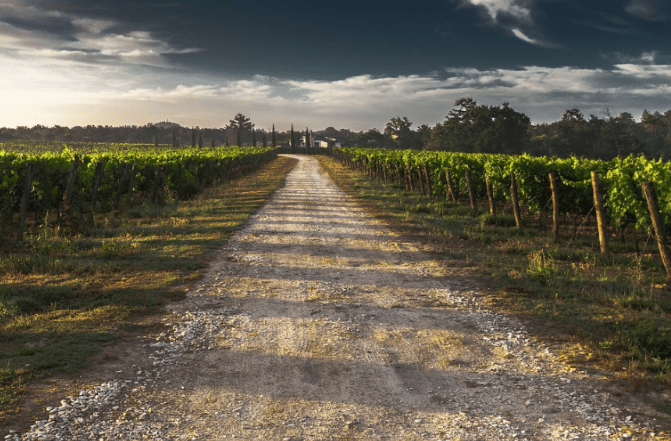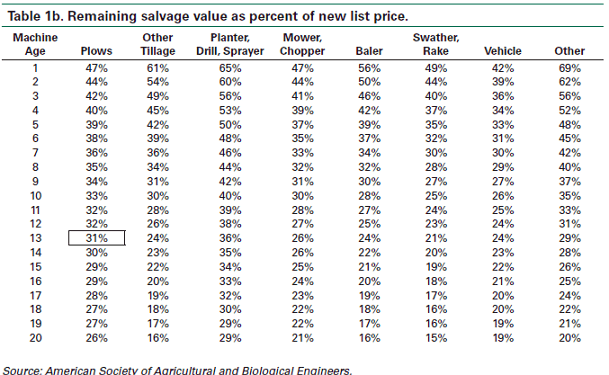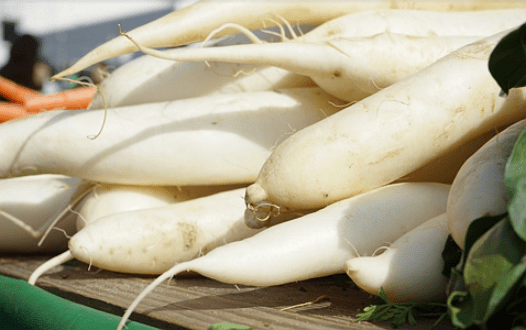Farmer’s Guide to Farming Techniques and Practices
Being able to live off the land and create a sustainable food source is a dream for many individuals these days.
With so much information available on planting the right crops and buying the right equipment, it can be overwhelming to take the first tangible steps toward successful farming.
The farming process has been around for centuries, and it has only gotten better over time. Trial and error, as well as improvements in science, have made new types of farming and new farming techniques significantly more successful.
If you could learn from those who have already had success, what farming tips would they be able to offer you?
Agriculture is an incredibly worthwhile pursuit, but there is a lot of knowledge and wisdom to be learned for those just getting started. To help you take well-advised first steps, we’ve assembled this farmer’s guide to different types of farming with farming activities and general farming tips.
Are you ready to start a successful farming process? Find out using these helpful farming tips below.
See Also: Organic Farming Definition, Advantages, and Disadvantages
AdvisoryHQ’s List of the Top 6 Best Farming Tips
List is sorted alphabetically (click any of the tips below to go directly to the detailed review section for that farming guide):
- Consider your location
- Plan for your expenses
- Plant some perennials
- Properly manage your livestock
- Start small
- Write a business plan
High-Level Comparison Table
Farming Techniques | Farming Tips | Why it Matters |
| Consider your location. |
| Not every property is well-suited for all types of farming. |
| Plan for your expenses. |
| You need to be prepared for startup costs associated with successful farming. |
| Plant some perennials. |
| Perennials are great at increasing the health of your land. |
| Properly manage your livestock. |
| Prevention is less expensive than veterinary bills that could otherwise be avoided. |
| Start small. |
| Starting small minimizes the potential cost of mistakes. |
| Write a business plan. |
| Setting realistic goals and benchmarks helps to gauge success. |
Table: Top 6 Best Farming Techniques | Above list is sorted alphabetically
What Farming Activities Will You Do?
Most of us can agree that agriculture of any variety is a worthwhile and noble pursuit. For most farmers, particularly those who are relatively inexperienced, it’s important to discuss the different types of farming you can choose from.
A good farming guide will advise you to select farming methods that you are at least moderately familiar with or willing to learn about.
Do you have extensive experience with livestock? If so, you may want to consider all of the types of farming you can select when it comes to livestock farming.



Farming Guide
For example, farming methods that include livestock may include raising poultry, pork, or beef. Other farmers may collect eggs from their hens while simultaneously using other types of farming practices in their spare time.
The choices for agriculture involving livestock are just as numerous as those for growing.
The second most common type of farming is growing food. Farming techniques in this category will vary depending on the area you live in and how much land you have. Some examples of popular crops include:
- Corn
- Fruit and tree nuts
- Rice
- Soybeans and oil crops
- Sugar and sweeteners
- Vegetables
- Wheat
According to the United States Department of Agriculture Economic Research Service, these are the most common crops grown within the United States. Within each category are multiple variations of the type of fruit or vegetable, type of oil crop, or sweetener crop.
The farming types you pursue will be dependent upon the reason you’re pursuing agriculture at this point in your life. Decide what your primary goals are: making a living, creating extra food for yourself and your community, or exploring a new hobby. This will play a big role in what type of farming guide you should be researching and how to treat your new venture.
You’ll have to really evaluate where your passion and skills are to make the most of this farming guide. Most of our farming tips apply to both livestock and crop-growing, but you can customize each one to suit your needs.
Farming techniques can become highly specific once you dive into the specific types of farming. Our farming guide will be more generalized to help get your farming activities off the ground and into practice sooner than you imagined.
Don’t Miss: Top Organic Farming Techniques | Guide
All-in-One Change Management Tools
Top Rated Toolkit for Change Managers.
Get Your Change Management Tool Today...
Consider Your Location
A good farming guide will advise you to consider the age-old adage of real estate: consider your location first and foremost. Not only is your location important in terms of how marketable your farming practices will be, but it also determines the farming techniques you’ll be able to do.
Before you start considering purchasing properties, you’ll need to think through the type of farming you intend to pursue. Grist.org recommends weighing all of the options:
- Are you interested in becoming a homesteader or supplying food only for yourself?
- Are you planning on using your farming techniques to create a sustainable income for yourself?
- Is farming going to be a new lifestyle for you or a professional pursuit?
Practical Farming Tips
When you’re shopping for space, consider that not every type of land or property will be well-suited to the crops or livestock you intend to have. If you’re going to grow crops, one of the top farming tips would be to research the types of soil, climates, and areas where your preferred plant will grow the best.
For livestock farming, experienced farming tips would recommend looking at the necessary space requirements for your animals to have room to roam.
Key farming tips will tell you to keep your future goals in mind, but don’t allow them to limit your options. Select a property that gives you and your farming techniques room to grow, explore, and adapt over time.
Plan for Your Expenses
Apart from the initial cost of your property, you need to be certain that your farming guide is helping you to plan appropriately for your expenses. Purchasing land, seed, and livestock isn’t necessarily the most expensive initial investment that you’ll have to make.
When you’re researching specific farming methods, you’ll likely find that many farming practices are next to impossible to do with your own two hands. Equipment, including tractors, is a necessary part of everyday farm life. One of the best farming tips is to be prepared for the initial expense of your equipment.
Practical Farming Tips
Keep in mind that you don’t have to purchase your equipment new. Depending on the type of machine you need, you can save a significant amount by purchasing used equipment. The chart below is available from Iowa State University and it demonstrates the remaining value compared to the new price of various machines.



Farming Expenses
You can clearly see that after the first year in use, a plow, mower, rake, and vehicle are all worth less than half of their initial cost. A good farming guide would point you toward investing in lightly used equipment to save substantial amounts of money on your startup costs.
Other farming tips include remembering that the economic life of your machine (the time that you will own it and be able to use it) tends to be between ten and twelve years. Tractors have a slightly longer economic life at fifteen years. Estimating the cost per year for maintaining any potential farm equipment can help you to better plan for your expenses year over year.
Related: All You Need to Know (Definition, Benefits, & Facts)
Plant Some Perennials
Farmers who are searching for the perfect farming guide for crop planting will definitely want to consider planting some perennials. There are a lot of benefits for your harvest and your land with this type of crop.
Roots on a perennial crop extend far deeper into the earth than their annual counterparts. One farming guide demonstrates just how significant the root structure is with this cutaway picture of the earth:



Farming Activities
With the deeper roots extending through your soil, your farm is likely to experience some significant benefits:
- Less soil erosion
- Access to nutrients and water sources otherwise unavailable to your plants
- Reduces compaction
- Creates more soil
Practical Farming Tips
No matter what farming types you’re considering, planting perennials of some variety should be a consideration for you. Different farming techniques can be used alongside perennial planting to help keep your land healthy for the long haul.
For example, even livestock farmers can benefit from perennial planting. The same farming guide from Garden points out that trees are a type of perennial plant.
Trees not only offer all of the benefits listed above, but they can also help to create shelter and a healthy habitat for your animals.
Properly Manage Your Livestock
Particularly if you are going to be using livestock to bring in the majority of your income, you need to make sure you are properly managing the animals in your care. This means more than simply keeping their vaccinations up to date or having a local veterinarian out once a year.
You will need to educate yourself on all topics pertaining to the care of your new animals. Considerations not often thought of in advance are:
- Nutrition
- Land management
- Disease prevention
- Shelter
Education can come through a variety of sources. Devour books from the local library on farming tips for livestock. Seek the wisdom and advice of experienced farmers and livestock handlers in your area to see where you have room for improvement.
Practical Farming Tips
The more education you can arm yourself with about different farming techniques for livestock, the healthier your animals and your profits can be. Creating humane and safe spaces for your animals should be a top priority, even though it may be more expensive to do so initially.
Drovers.com points out that disease prevention is a substantial initial investment into the health of your herd. However, when you compare it to the cost of a disease outbreak, it seems relatively insignificant. Diseases can travel through a herd, which means even more bills from your veterinarian as well as the expense of treating the problem itself.
Popular Article: Best Organic Gardening Tips | How to Start an Organic Garden
Start Small
You’ve spent a lot of time reading every farming guide you can get your hands on and poring over all of the farming techniques you plan to use. Your dreams keep growing bigger, but professionals would recommend that one of the best farming techniques is actually to start small.
When you begin a new hobby, lifestyle, or career of any type, you’re likely to make a few mistakes at first. If you’re lucky, those mistakes won’t be terribly expensive or consume too much of your time. Farming can quickly put any problems you have under a microscope when you lose months’ worth of time invested as well as your monetary outlay.
Practical Farming Tips
Starting a farm may be a noble pursuit, but there is a learning curve involved. You won’t automatically become the world’s best farmer overnight. A farming guide from BeginningFarmers.org recommends keeping your first farm relatively small for a few reasons:
- Work out the details of how your farming techniques will function
- Allow time for you to continue learning better farming techniques
- Minimize the scope and cost of any potential problems
Deciding among the different farming types is an important step, but our farming guide would recommend keeping ambitions small at first. Select a couple farming techniques to try instead of diving right into every aspect in the first few months.
Write a Business Plan
If you plan to make a sustainable income from your agricultural endeavors, it’s time to start treating your farm more like a business. Businesses need a clear and organized business plan in order to give shape and direction to their overall goals.
Even if you lack the knowledge to write a business plan from scratch, there are plenty of resources available. The United States Department of Agriculture put together a lengthy list of resources for technical assistance with new farm business planning.
You can even check with the Small Business Administration. They offer tools to help craft a realistic business plan, and you could certainly use this as your farmer’s guide to future successful farming.
Practical Farming Tips
What kinds of things should you include in your business plan? It should ultimately be your farming guide for how you will run your business over the years ahead. Consider adding these details into your written plan to keep your thoughts more organized:
- Farming types you plan to pursue
- Financial needs and expenses of start-up and maintenance
- Marketing strategies
- Projected production capacity
As with any business, your plan should set realistic timeframes and benchmark tests to gauge if you are engaging in successful farming. Your farmer’s guide to the business should be directing all of your farming activities, your farming process, and make your future direction very clear.
Read More: What Is a Wind Farm? | How Do Wind Farms Work?
Conclusion—Top 6 Best Farming Tips
Successful farming can easily be the result of planning in advance and finding the right farming guide to get you started. Education is key to practicing the top farming techniques in the agricultural industry.
Our farming tips will help you to make savvy business decisions in the initial setup of your new farm. Following our farming guide allows you to treat your new adventure as a business that could earn you a sustainable income instead of a side hobby. Caring for your land and animals is just as crucial as planning the financial flow of your farm.
You should know how to plan for the different farming types as well as how to incorporate various farming methods. A thorough farming guide will give you a glimpse at every angle of your new venture. AdvisoryHQ’s farming guide is focused on helping you to consider all of the perspectives necessary to create a sustainable and substantial income using your property.
If you’ve been contemplating a lifestyle change or a career switch, successful farming could be just a business plan away with these farming tips.
- https://pixabay.com/photos/road-vineyard-countryside-way-path-428039/
- https://www.extension.iastate.edu/AGDM/crops/html/a3-29.html
- https://pixabay.com/photos/radishes-raphanus-white-vegetables-318155/
AdvisoryHQ (AHQ) Disclaimer:
Reasonable efforts have been made by AdvisoryHQ to present accurate information, however all info is presented without warranty. Review AdvisoryHQ’s Terms for details. Also review each firm’s site for the most updated data, rates and info.
Note: Firms and products, including the one(s) reviewed above, may be AdvisoryHQ's affiliates. Click to view AdvisoryHQ's advertiser disclosures.









